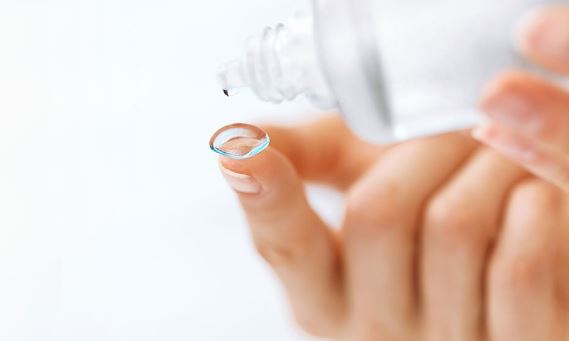Lifestyle
7 side effects of contact lenses you probably don’t know

Contact lenses are quite common with women either it’s medically recommended or just for fashion.
As beautiful as the contact lens may seem, there are some risks involved in using them.
If you do not use contact lenses properly, you will be exposed to some side effects which could even affect your vision in the long run.
Here are some of them.
1. High risk of eye infection
Wearing contact lenses automatically puts you at a greater risk for eye infections. This is partly because you’re putting your fingers near your eyes more often than someone who doesn’t wear contacts, but it’s also just from wearing them.
Keratitis, the most common infection that can result from wearing contact lenses, is caused by dust, bacteria, viruses, and in rare cases, eye parasites. It affects the cornea and causes pain, redness, blurred vision, discharge, and/or watery or irritated eyes. Keratitis can happen for a number of reasons: when you don’t take your contact lenses out at night, exposing your contacts to any type of water, or not cleaning your contacts properly.
2. Corneal scarring
If you’re allergic to the material used to make the contact lenses (plastic or silicone), or wearing contact lenses for too long, it can cause corneal inflammation and injury, which can lead to scarring and permanent damage to your vision (this is also extraordinarily painful, so corneal scarring is something you want to prevent at all costs). Clean them, check them for scratches, and don’t over-wear them.
3. Increased risk of dry eye syndrome
Itchy, irritated, dry, red eyes are the most common complaints when wearing contact lenses, and these symptoms usually indicate dry eye syndrome . You can get dry eye syndrome even if you don’t wear contact lenses, but it commonly happens when you first adjust to wearing contacts, when your contacts dry out as you’re wearing them, or wear contacts that don’t fit you properly.
As mentioned above, contact lenses can reduce the amount of tears your eyes produce, which act as a “moisturizer.” Soft contact lenses can actually absorb these tears, drying your eyes out even further.
4. Ptosis (Eyelid drooping)
Ptosis is the technical term for droopy upper eyelids, and research shows there’s a direct link between wearing both soft and hard contact lenses and ptosis. However, studies show that people who wear hard contact lenses are at a 20 times greater risk of developing ptosis than those who wear soft lenses
5. Corneal ulcers
Eye infections can cause corneal ulcers, and because contact lenses wearers are at a higher risk of eye infections, it makes sense that they’re also at a higher risk of corneal ulcers. These are painful, open sores on the outer layer of the cornea, and it is most often caused by keeping lenses in for too long.
6. Blockage of oxygen supply to the eyes
Since contact lenses lie directly on the eye and cover the entire cornea, the amount of oxygen reaching your eyes will decrease. Good oxygen supply is absolutely critical to keep the eyes healthy. They aren’t designed to be worn for super long periods of time without a break, and they definitely weren’t made to be worn while you’re sleeping. The longer the contact is in your eye, the less oxygen your eye will get, as the contact blocks air from getting in
7. Reduced corneal reflex
Using contact lenses may cause reduced corneal reflex in the eye. Corneal reflex is a protective mechanism of the eye where the brain signals the eyelids to drop down to protect our eyes whenever the slightest amount of pressure is applied to the cornea. Corneal reflex makes sure that we close our eyes if something may cause a direct trauma to them, like a flying object coming towards our eyes or if someone tries to poke us.
When you use contact lenses constantly, you teach your body to ignore the natural corneal reflex. This may dull the eye’s response to corneal reflex, which could lead to the eye being damaged if you can’t shut your eyes fast enough in case of danger.









